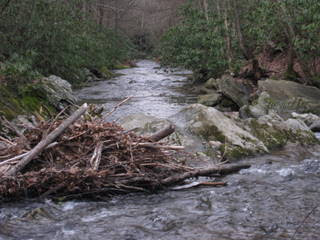As you can see, very scary skulls and , really, not quite my style.
I had also been spending time on a website called Modern Vespa, and one of the main topics, no matter what else was being discussed, was visibility as it pertains to safety. Eventually the "safety seed" that had been planted in my brain grew. Very slowly probably, not very fertile ground. After serious thought about what colour helmet would make me visible and look good too, I decided on the Gulf Racing colours from the 60s and 70s as used on the Ford GT40 and some minor league german cars, Porsches I think.
Here is the front 3/4 view of my custom painted, high visibility helmet.
I took the helmet to pieces until all I had was the fibreglass shell, then I sanded all the old paint and skull decals off the helmet. Next I painted the whole outside with a teal blue/green can of spray paint that had been in our basement for 6 years. We brought it with us when we moved!!!! I had to leave it in the living room for 24 hours so that it would warm up enough to use. Our basement is cold. After applying 3 coats with drying periods of 1 hour between coats, I let it sit for a day.
Side view. I can almost see my face in that blue.
The next day I used a pencil and marked out where I wanted the orange paint to go. This took a couple of tries to get it satisfactory. It is more difficult than you might imagine to draw parallel lines on a spherical object. In the end I had a 3 1/2 inch strip from front to back and a 1 1/4 border all the way around the helmet. To get the curves for the front of the helmet I used an old margarine container, it worked pretty well I think.
Front view. Well designed curves, eh!
The back of the helmet had tighter curves. I actually like the look of the back better than the front. I think I used the cardboard tube from a roll of toilet paper to get that curve. Toilet paper tubes, not just for making binoculars for the grandkids anymore.
Nice rear. Very visible.
The final step was to apply a clearcoat to protect the paint. I patiently waited a full 24 hours before I even thought of applying anymore anything. After the 24 hours was up I perched the helmet on a shovel handle as it was such a warm sunny day outside.The beauty of using a shovel is that you can move it anywhere in the garden if the area you started working in has suddenly been put into shadow by the house, or a tree.
I started spraying the clearcoat on one side of the helmet and the blue looked great as the wet spray hit it, nice and shiny.
Unfortunately the same cannot be said of the orange. All of a sudden there were cracks and crinkles appearing all over the orangey bits. It looked like one of those dried out lakebeds you see in movies, usually with a cowskull laying in the dirt. I decided it was too late to do anything about the mess, soooo, I walked away and let the sun dry it out. While it was drying I went back inside to compare the cans of paint.
The orange paint was Enamel and the clearcoat Acrylic and unbeknownst to me, the two do not mix. In fact there is a whole industry devoted to making sure that these two opposites do get to meet and work against each other. It is the antique furniture/shabby chic industry, and the effect is called a "crackle finish.Anywho, Idecided a crackle finish wasn't so bad, so I went outside and applied 3 or 4 more coats of clear. Heavy on the blue and a bit lighter on the orangey bits. I didn't want the orange paint to just start sliding off the helmet altogether.
Here is a look at the "crackle"
A couple of people have seen the finish on my helmet and they approve, I really like it myself too. It looks like it has been around for years and is aging gracefully....like me hahahaha.
You can see I also put the edge trim piece back on the helmet too, it really finishes it off and makes the orange border look just right.
All the best,
Superscooter.



























